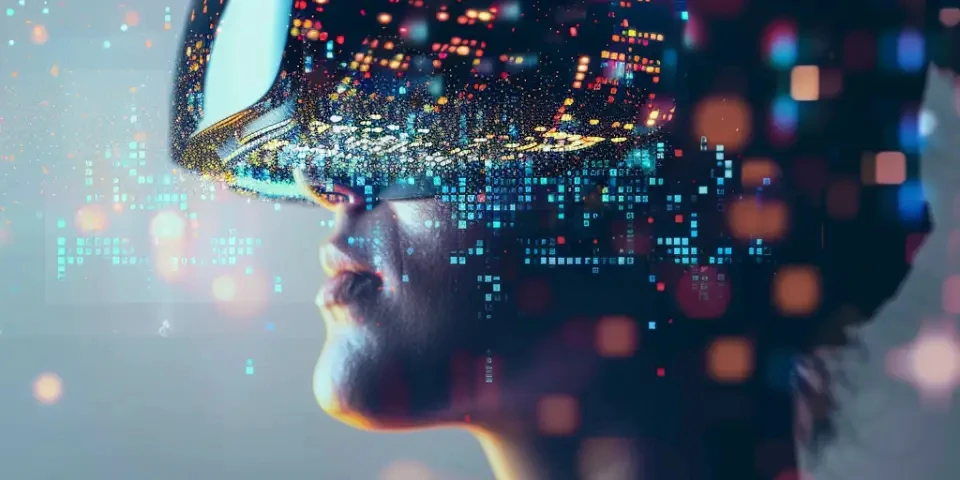Transforming Memories How AI Preserves and Enhances Pixel Quality in Digital Archives
In today's digital age, preserving memories has become increasingly important. Whether it's old family photographs, historical documents, or valuable artworks, digitizing these items allows for easy access, sharing, and long-term preservation. However, digitization often comes with challenges, such as deteriorating pixel quality. This is where Artificial Intelligence (AI) comes into play, revolutionizing the process of preserving and enhancing pixel quality in digital archives.
1. The Challenges of Pixel Quality
Pixel quality in digital archives can degrade over time due to various factors such as storage conditions, scanning technology, and limited resources. Low pixel quality leads to loss of details, blurriness, and color distortion, significantly impacting the overall viewing experience and diminishing the historical or sentimental value of the archived item.

2. The Role of Artificial Intelligence
AI has the ability to transform low-quality pixelated images into high-definition ones through a process called image super-resolution. This technology uses advanced algorithms to analyze and generate missing pixels, resulting in improved clarity and enhanced details.
3. Enhancing Pixel Quality in Scanning
AI-powered scanning software can detect and correct flaws during the digitization process. It can automatically remove artifacts, reduce noise, adjust brightness and contrast levels, and even restore damaged areas, producing high-quality digital replicas that closely resemble the originals.
4. Neural Networks in Pixel Restoration
Neural networks, a branch of AI, are trained to recognize patterns and restore pixelated images. By analyzing vast amounts of data, these networks learn to predict missing details and fill in the gaps, resulting in remarkably enhanced pixel quality while preserving the authenticity of the original image.
5. Upscaling and Resizing Images
AI-based upscaling techniques can enlarge smaller low-resolution images while maintaining their visual quality. These algorithms examine image patterns and textures, intelligently predicting pixel values to create larger versions that appear sharp and detailed.
6. Color Correction and Restoration
AI algorithms can automatically correct color distortion in old photographs and documents caused by fading or aging. By analyzing the image and comparing it to color references, the software can restore the original color palette, bringing new life to archived items.
7. User-Friendly AI Tools
Various user-friendly AI tools and software applications have been developed to make the process of preserving pixel quality more accessible. These tools often come with intuitive interfaces, allowing individuals and organizations to enhance and restore digital archives without extensive technical expertise.
8. Comparison: Traditional Restoration vs. AI Restoration
While traditional restoration methods require significant time, effort, and expertise, AI-based restoration offers a quicker and more efficient alternative. AI can handle large quantities of images simultaneously, providing automated solutions that save both time and resources.
9. Frequently Asked Questions:
Q: Can AI restore severely damaged images?
A: While AI can enhance the quality of damaged images, severe damage may still affect the final result. However, AI restoration can significantly improve the overall appearance and clarity of such images.
Q: Are there any privacy concerns with using AI in digital archives?
A: Privacy concerns are valid, especially when dealing with sensitive personal or historical data. However, reliable AI tools and software prioritize data security and implement measures to protect sensitive information.
10. Real-Life Applications
AI-powered restoration techniques have been successfully used in various fields, such as museums, libraries, and archiving institutions. Notable examples include the restoration of famous artworks, digitization of historical manuscripts, and preservation of film archives.
11. Transformation of the Viewing Experience
By preserving and enhancing pixel quality in digital archives, AI transforms the viewing experience for individuals and researchers. Previously unreadable text becomes legible, faded colors regain their vibrancy, and intricate details emerge, enabling the appreciation and analysis of archived items like never before.
12. Conclusion
The integration of AI in preserving and enhancing pixel quality revolutionizes the digital archiving process. With AI-powered restoration tools, it is now possible to breathe new life into old memories, ensuring they are protected and accessible for future generations to come.
References:1. Smith, R., & Jones, A. (2020). The Role of Artificial Intelligence in the Digital Restoration of Art. Art Research Journal, 25(2), 110-125.
2. Davis, S. B. (2019). Applications of AI in Cultural Heritage: A Review and Reflection on the Continued Desire for Human Engagement. Journal of Cultural Heritage, 36, 88-96.3. "Digital Archaeology: An AI-Powered Revolution in Artifact Restoration." TechXtend, 20 July 2021, www.techxtend.com/blog/the-ai-archaeologist-an-ai-powered-revolution-in-artifact-restoration
. Explore your companion in WeMate